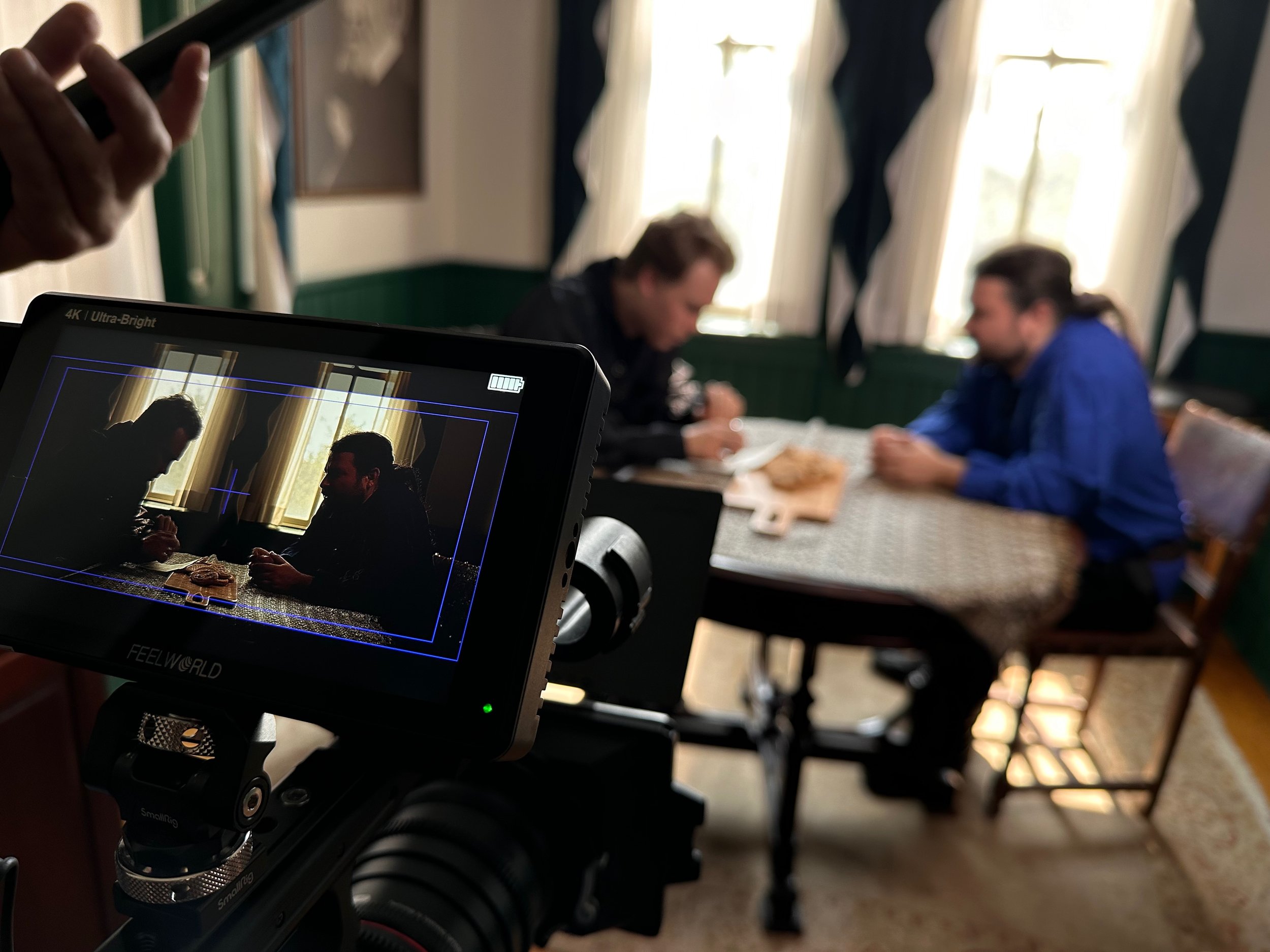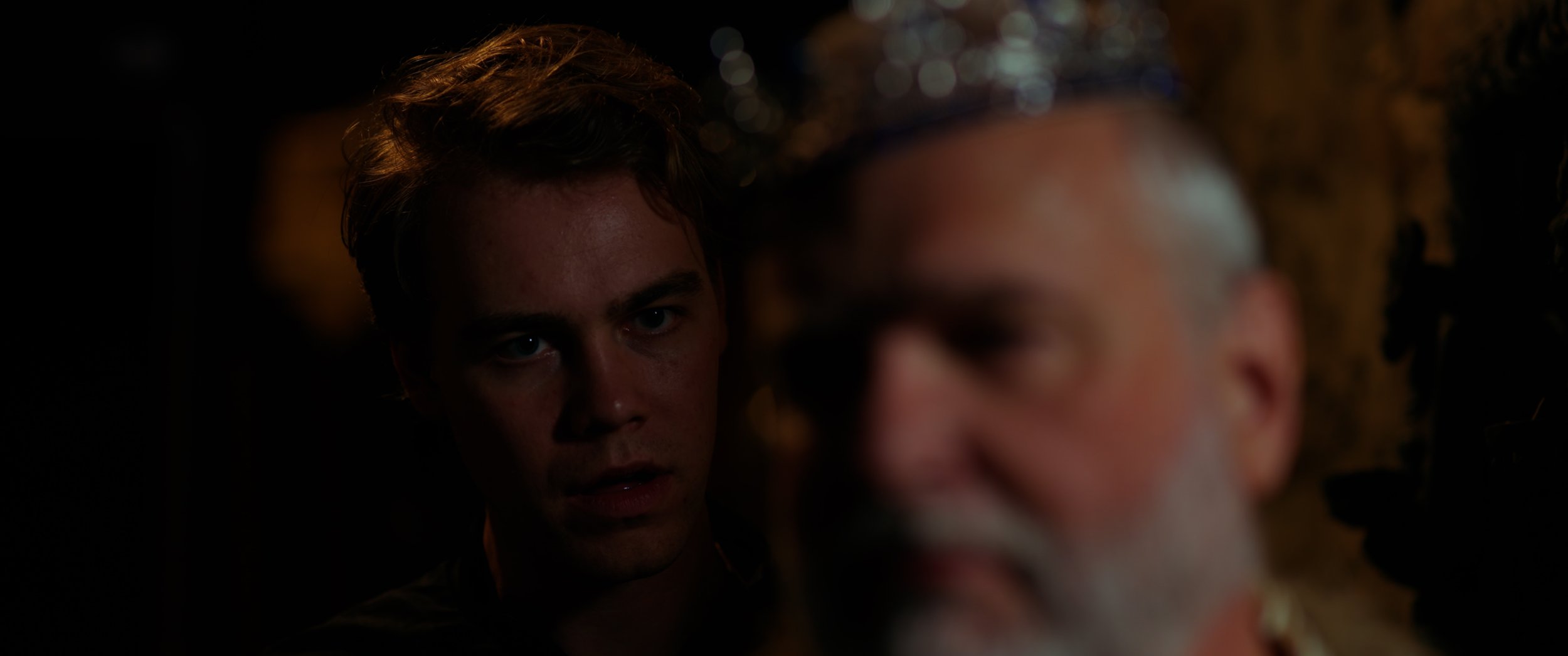High Pressure Cinematography for a High Fantasy Shoot
Imagine stepping onto the set of a high-fantasy pilot with 29 pages of script and over 20 scenes to shoot in just 28 hours. Daunting? Absolutely. But for me, it became a welcome challenge. This wasn’t just another pet project—it was a proof-of-concept, and if we pulled it off, it could open doors to bigger things. The pressure was palpable, but so was the excitement.
Before this, my experience had been limited to smaller projects where the stakes didn’t feel as high because the time constraints weren’t as intense. This was different. It was technically a medium-sized production, and I knew that all eyes wouldn’t just be on the actors—people would notice every detail I brought to life through the lens. Expectations felt heavy, but I was determined to make it work.
Behind-the-Scenes - 1-point light setup.
The Shot
Growing with the Crew
As a single camera operator, gaffer, and grip on smaller projects, I’d grown confident in my ability to bring visions to life. But I knew this project would require more than just me. Thankfully, the production provided me with an assistant. While they were relatively new to the field, they were eager to learn and absorbed everything like a sponge. By the second day of shooting, I was no longer looking over their shoulder, trusting them to handle my gear with care. Having that support was a game changer, freeing me to focus on the bigger picture.
Behind-the-Scenes - 3-point setup.
The Shot
Embracing the Chaos
Heavy compromises had to be made. It’s one thing to have a shot list with ideal lighting setups planned out for you; it’s another to step onto the set and be faced with time limitations, equipment and set constraints, and the reality that the actors have to cram a week’s worth of performance into just two days. The pressure of knowing that every second counts makes you think on your feet. There’s no time for perfection, only for getting the job done.
Unfortunately, solid pre-production time wasn’t a luxury I had here. I didn’t get to visit the set beforehand or see rehearsals, which meant I had to rely on instinct and experience to light the shots in ways that saved time. My approach was simple: light each shot with minimal sources to avoid unnecessary setup changes. One or two light sources became my go-to for most scenes, allowing us to move quickly from one angle to the next.
But even that strategy had its limits. There were moments where I knew, as we were filming, that the shots weren’t as good as they could have been. We were running out of time, and in three specific instances, we had no choice but to push forward. We managed to get the shots, but with only one or two angles, which meant fewer options for the edit. It’s a tough pill to swallow as a cinematographer, but it’s also part of the job. Sometimes, you have to compromise and move on.
Behind-the-Scenes - 1-Point Setup with 2 flags
The Shot
Lessons from "The 48"
The pace of this project reminded me of the "48 Hour Film Project" competitions I’ve participated in over the years. In those, a team only has 48 hours to write, shoot, and edit a short film from scratch—no planning beforehand allowed. The accelerated shooting days on this pilot brought me back to that mindset. The script was written, the production design was there, but the time constraints felt just as intense as in those competitions. If I hadn’t done the 48s, I don’t think I’d have been able to keep up with this kind of pressure. It’s that kind of experience that teaches you to be fast, efficient, and decisive when it matters most.
Behind-the-Scenes - 3-point setup
The Shot
Reflecting on the Experience
There’s a certain thrill that comes with working under pressure, even when things don’t go perfectly. Sure, there were moments where I wished we had more time, more angles, more room for creativity. But in the end, it wasn’t about achieving perfection—it was about working with a team of dedicated, hardworking people who wanted to do the best they could with what they had.
If I ever have to take on a project like this again, I’d do it with the same cast and crew. Their passion and commitment were contagious, and despite the challenges, we all pushed forward to create this. Sometimes the best work comes out of constraint—and with the right people by your side, anything is possible.








